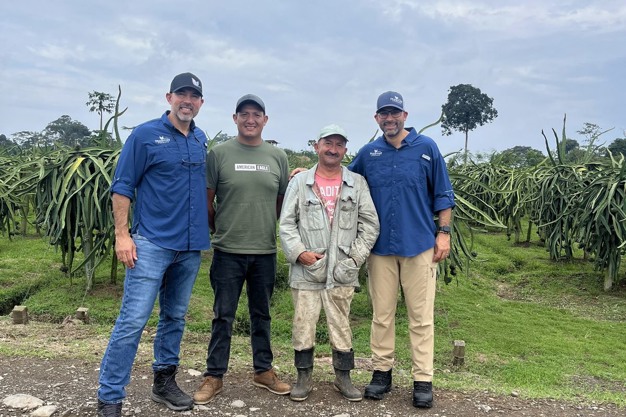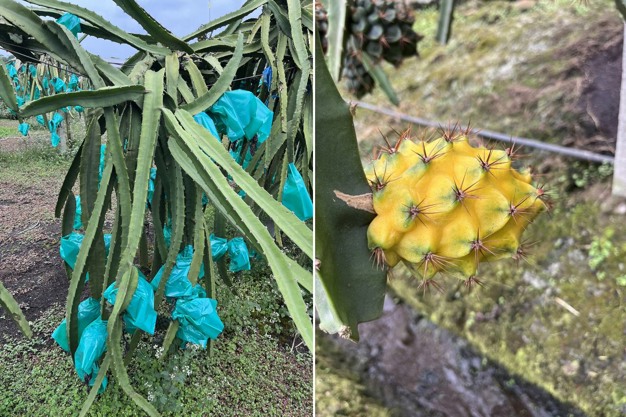Recently, Freshway Produce visited with their dragon fruit growers in Ecuador and is providing an update on their observations as well as the development of the crop. “It was very refreshing to see the agricultural advancements growers are making to improve the yields and quality of the crop,” says Jose Roggiero of Freshway Produce. “Ecuador is blessed with the Amazon rainforest and there is no better place to grow dragon fruit. Due to the fertile soils, production volumes came relatively naturally, and growers weren’t forced to focus on yields and quality.” said Roggiero. However, during this recent visit, he noticed that growers are increasingly thinking about improving yields, preventing cosmetic damage, and limiting fungus damage.
Increasingly, dragon fruit growers are covering the fruit with plastic to prevent staining and damage from fungus. In addition, they are exploring the use of shade houses. “Shade houses cover the crop and limit exposure to the environment,” said Roggiero. “They reduce the application of fungicide chemicals and result in cleaner, better looking fruit.”

Jose Roggiero (left) and and Ricardo Roggiero (right) with Freshway Produce are visiting with two local farmers in Ecuador.
Amazon rainforest versus coast
Currently, harvest of the yellow-skin, white-flesh dragon fruit variety is slowly getting up to speed in the growing region of Palora. It is starting up slowly due to cloudy weather, but the number of sunny days is improving. “Last week, volumes were still very small, and product was mainly shipped by air. However, volumes are ramping up and we expect to have a good month in February with volumes peaking towards the second and third week of this month,” Roggiero shared. If all goes well, production is expected to last until mid-April. The dragon fruit that is currently being harvested is the Palora variety. “It is considered the sweetest variety with Brix levels ranging between 18 and 22.”
The white dragon fruit crop experienced a decrease in supply in January due to cloudy weather. Unlike yellow dragon fruit, the white variety grows on the coast, in a different climatological region. Volumes will go up again, starting this week with product arriving in the US in the second and third week of February. The peak in production will be reached closer to March.
Pricing
The small dips in production have spurred an increase of dragon fruit prices at farm level. “Growers are trying to capitalize on these short gaps. However, the minute market prices reach levels of $20-$30 / 10 lb. box, demand slows down drastically. In my view, it would be better to keep the price between the mid-$10 to mid-$20 range. That price gives growers a nice return and keeps customers excited to continue purchasing dragon fruit,” said Roggiero. Supply of dragon fruit from Ecuador has become more consistent in recent years and retailers are realizing they can rely on dragon fruit for promotions. “With volumes ramping up, February and March are good times to promote yellow dragon fruit while supply of white dragon fruit is ample in March and April.”

Left: Farmers using plastic bags for protection on the fruits. Right: Yellow dragon fruit from Palora.
Turmoil
Ecuador was recently impacted by social and political turmoil, which mainly affected the white dragon fruit crop. “It created a bottleneck as harvesters couldn’t get to the plantations, roads were closed and there were issues at the airport. However, the situation has improved now,” Roggiero commented. Freshway Produce is vertically integrated and the company’s operation in Ecuador was partly impacted by the turmoil. “Due to danger on the street, we had a temporary shortage of workers. However, business quickly returned to usual, and our vertical integration has allowed us to continue supplying our customers during this time.”
 For more information:
For more information:
Jose Roggiero
Freshway Produce Inc.
[email protected]
www.freshwayusa.com










